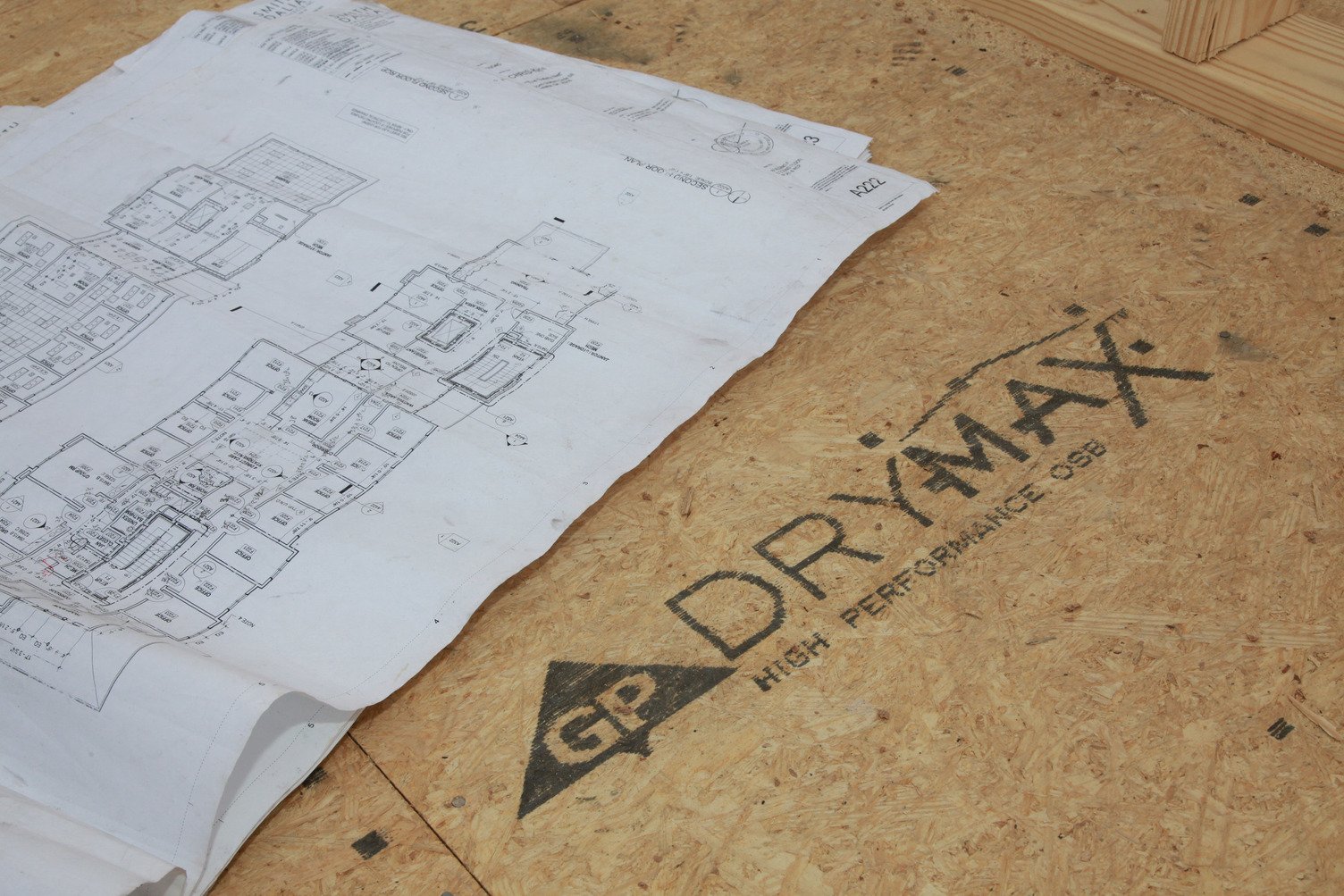Engineer Squeaks out of Your Floors with Products & Process

We’ve all been there. For every teenager that’s tried to sneak in after curfew, for every tired mom that finally got the baby down for a nap, and for every downstairs neighbor settling in to watch a movie, there’s a step, threshold, or telltale floor squeak ready to ruin their day.
Bad Moves
Squeaky floors are generally caused by movement somewhere in the floor assembly. This could be the subflooring and fasteners rubbing against each other, a gap or void between the subflooring and the flooring, or the subflooring and the joists, or deflection caused by joists spaced too far apart.
In these scenarios, Dobbins explains that more space between floor joists gives the subflooring panel a higher likelihood of deflecting (or bending), especially under heavier loads. This can cause squeaky floors on its own but can also contribute to loosened fasteners that exacerbate the problem. He says this problem is seen less often in custom homes where builders that are less concerned about cost and place more floor joists closer together, allowing for a higher live load.
“In a lot of new home construction – especially starter homes – builders might choose a 23 tongue-and-groove subfloor panel and place floor joists 24 inches on-center,” says Stacy Dobbins, Georgia-Pacific Building Product’s Senior Sales Representative. “This is the max you can span, so it lets them save a little money on framing materials and keep the home more affordable, but the trade-off is that the live load per square foot on that subflooring is going to be the lowest you can get.”
In addition to engineering floors in a way that reduces deflection across spans, Dobbins suggests that using the right fastening methods will also help reduce the likelihood of squeaky floors. “Fastening correctly and using subfloor adhesives works well,” he says. “Framing the floor and installing the panels properly in the first place is really important. I know some people might add more screws to their floor if they find a squeak, but by the time your floor starts squeaking, it really doesn’t matter. You have to engineer for a quiet floor, rather than try to fix it after the fact.”
Smooth Sailing
Choosing the right OSB panels for subflooring is a key element of building a solid (and quiet) floor. To combat deflection, builders should choose a panel that offers a high level of stiffness and will also grip fasteners tightly.
Moisture resistance is also key. Since jobsites are often at the mercy of the elements, subfloor panels can find themselves soaking wet for days at a time when the weather doesn’t cooperate. Too much moisture can cause edge swelling, which can make it impossible (and inadvisable) to lay flooring properly. While Dobbins notes that the panels, once dry, retain their structural integrity, builders will lose time and money waiting for crews to sand down swollen seams to achieve a smooth floor.
Many OSB products on the market are designed to resist absorbing moisture on the edges, as well as through the panel faces, thanks to a variety of sealing technologies. Together, these features all but eliminate the inconvenience of sanding. GP’s DryMax® High-Performance OSB and DryGuard® Enhanced OSB, for example, carry a 500 and 200-day “no sand guarantee,” so builders can feel confident that their floor assemblies will remain sturdy months after being subjected to adverse conditions without the need for sanding. If there is swelling at the seams within the warranty period, GP will pay to take care of the sanding.

Of course, preventing moisture intrusion in the first place is the best strategy. Dobbins says APA – the Engineered Wood Association recommends covering materials with tarps while on jobsites, and also offers best practices for building sturdy floor assemblies. “Following manufacturer and APA recommendations is really important,” he says. “It’s much harder to fix a squeaky or uneven floor than it is to build it right the first time.”